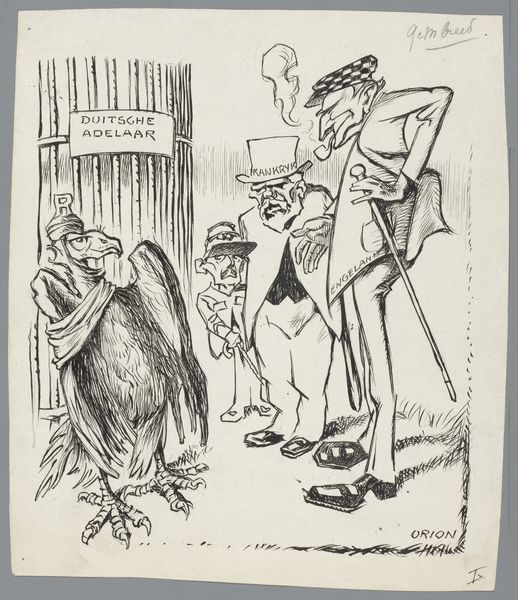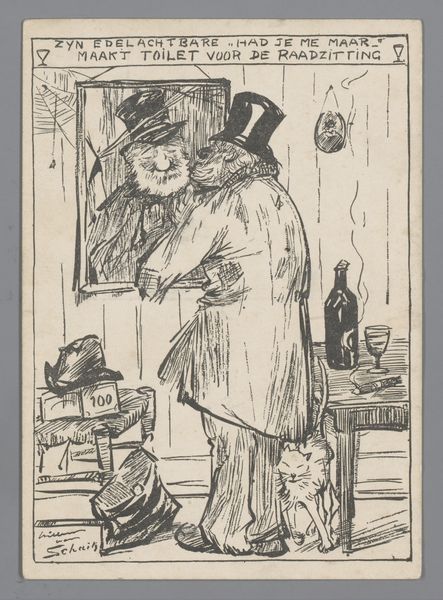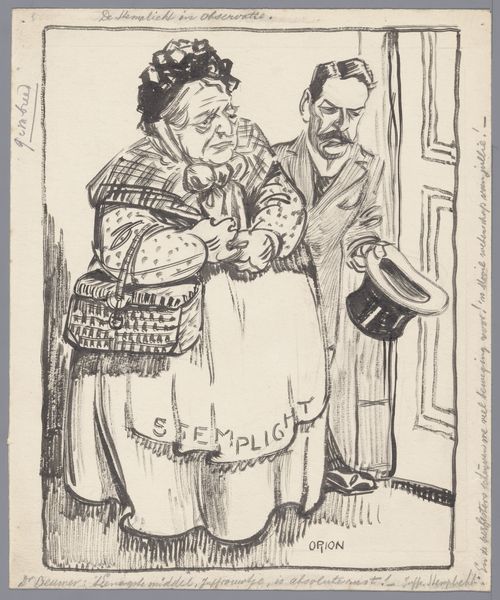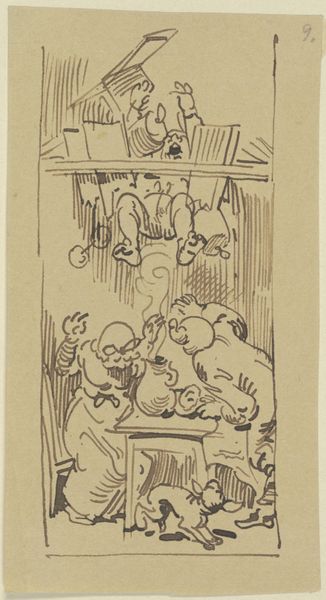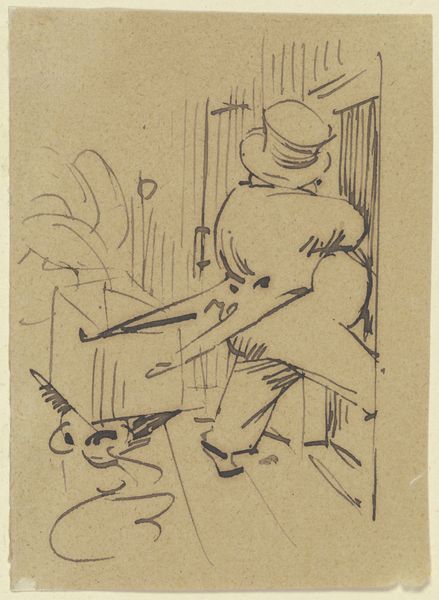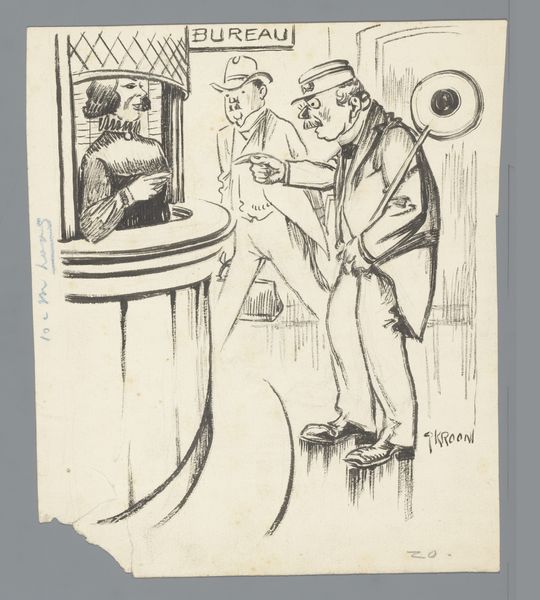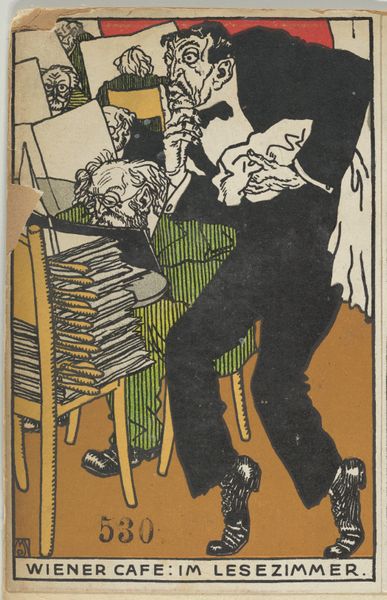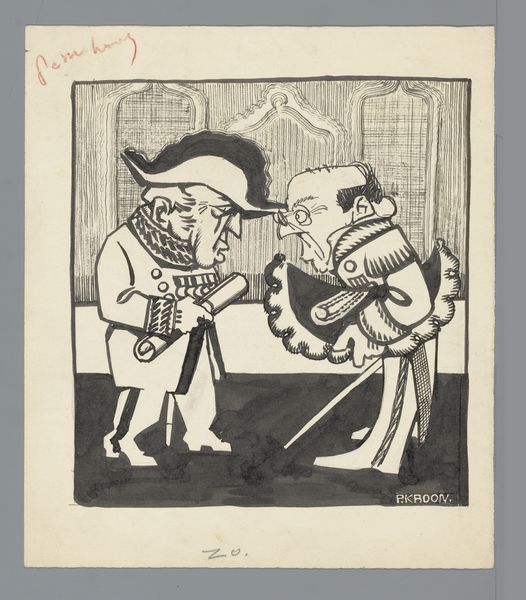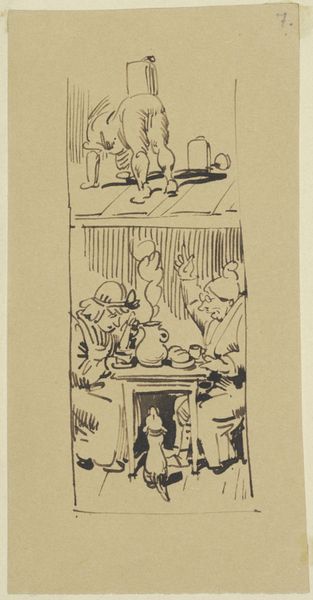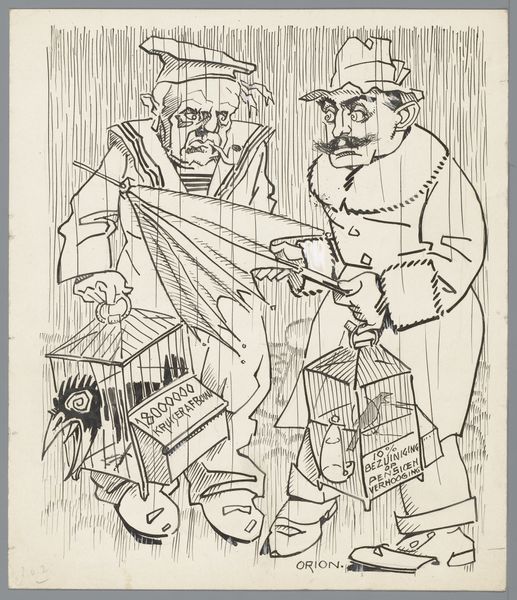
drawing, ink, pen
#
portrait
#
drawing
#
caricature
#
ink
#
pen
#
cityscape
#
modernism
Dimensions: height 252 mm, width 213 mm
Copyright: Rijks Museum: Open Domain
Curator: Here we have a rather biting political caricature titled "Nolens met Troelstra als een vogel in een kooi," which roughly translates to "Nolens with Troelstra as a bird in a cage." It's estimated to have been created between 1900 and 1935 using pen and ink. Editor: My immediate reaction is a feeling of confinement, obviously driven by the birdcage itself, but also something about the tight cross-hatching and cramped composition. The artist is really hammering home the sense of entrapment here. Curator: Indeed. The imagery is potent. We see the politician Nolens, identified by name on his hat, looking rather dubious. Next to him sits a cage labeled "Democratie," within which is depicted a figure representing Troelstra as a bird. Editor: Troelstra's head on a bird's body. That’s such a pointed visual! Birds symbolize freedom, so putting him in a cage flips that expectation on its head. Given the political context, it probably symbolizes the perceived constraints placed upon him, or perhaps his political downfall. Curator: Precisely. The inscription "Pater, gij moet scheiden gaan" suggests a call for separation, maybe hinting at ideological divides or failed political alliances. It's quite sharp commentary, especially if you know the history between these figures. It underscores how visual art serves as a powerful medium for political discourse. Editor: Definitely. The chessboard floor pattern adds to that sense of deliberate, almost theatrical staging, implying a calculated political game underway. What’s striking is the contemporary relevance. The dynamics of political maneuvering and the symbols of restriction – these themes continue to resonate today. Curator: That's a very insightful observation. It prompts us to consider how even seemingly dated political cartoons can offer valuable lenses through which to analyze current political situations. It uses historic symbols for current public awareness and cultural memory. Editor: This piece really emphasizes how much imagery can compress complex social ideas. I find it haunting, but also deeply thought-provoking. Curator: Agreed. It reveals how the past continues to inform our present political landscape through visual and social metaphor.
Comments
No comments
Be the first to comment and join the conversation on the ultimate creative platform.
